Apple tree Pink Lady: description, planting and care of the variety
The Pink Lady apple tree is a commercial variety. Every year it becomes more and more popular in the world due to its long shelf life and excellent taste.
Content:
- Description of the apple tree variety
- Site preparation
- Planting a seedling
- Apple tree care
- Pests and diseases
Description of the apple tree variety
The late-ripening Pink Lady apple tree is intended for growing in warm climates. It grows well in England, Australia, Western Europe with warm and long autumn. The variety was created in 1979 by a breeder from Australia Cripp. For this, he crossed the varieties Golden Delicious and Lady Williams.
Pink Lady (Pink Lady) tree of medium height, wide-oval crown, thickened. It lends itself well to formation. Possesses medium growth vigor. The variety is successfully grown on dwarf rootstocks. In this case, the trees are planted at a distance of 50 cm from each other. Pink Lady apple trees are grown on stocks 54-118.
The tree begins to bear fruit early. Flowers 5 cm in diameter. Fruits are large, up to 6-10 cm in diameter, round-conical in shape. The weight of apples reaches 180-200 g. The skin is dense, shiny, its color is greenish-yellow. It is covered with a blush that can range in color from light pink to red. It occupies up to 60% of the surface area. A light waxy bloom is visible on the fruits, through which yellow subcutaneous dots are visible.
The flesh is creamy, firm and very juicy.
The taste is pleasant, sweet and sour, with a taste of vanilla and wild berries. 100 g of pulp contains 55 kcal. It contains 96% carbohydrates, 2% protein and fat each with an optimal ratio of 67:16:17. Filming ripeness begins in late October or mid-November. The fruits are well stored and suitable for transportation. You can store them in the refrigerator, cellar or cool basement for up to 10 months. They retain their taste until May. The variety belongs to the 5-6 frost resistance zone (-17 ... -23 ° С). Therefore, it is recommended to grow it in the southern regions and the European part.
Site and soil preparation
For successful cultivation, an apple tree requires special natural conditions.
- Groundwater should approach the surface at least 2 m. If they are closer, grow a tree on dwarf rootstocks or drain the site. At the same time, trees are planted on ramparts or hills, specially poured so that the distance to the water is 2.5 m. On hills, trees will not be flooded in spring.
- The soil under the apple tree should be neutral or weak acidity. To prepare acidic soil add dolomite flour (500 g per 1 m2), slaked lime, ash.
- The pit under the apple tree is prepared in advance. When planting in spring, it is better to do this in the fall, when planting in autumn, in summer. The soil must be allowed to stand for at least 3 weeks. Otherwise, when it subsides, the root collar may go underground, and small roots will break off. The pit is 0.8-1 m deep, the same diameter. The removed soil is mixed with humus, peat (2 buckets each). If the soil is heavy, sand is added, if the soil is sandy, clay is added, which will retain moisture. A mound of earth is poured onto the bottom, filling it 10 cm above the soil level. Allow to settle.
- The distance between trees depends on the size of the crown, which it will have by the period of maximum fruiting.Trees of medium growth by this time have a height of up to 3 m and a crown width of up to 2 m. The advantage of such trees is early fruiting (in the 3rd year after planting) and convenient harvesting. The disadvantages of this type of tree are fragility, up to 15 years.
Apple trees on dwarf rootstocks require the most worries. They are grown where groundwater comes too close to the surface. The root system of the apple tree is located in the upper layers of the soil, and in dwarf ones it is generally very weak. Therefore, they are grown on trellises. The roots of vigorous trees can withstand temperatures down to -18 ° C, and of medium-sized trees to -15 ° C. Therefore, during a snowless winter, they can freeze slightly.
Apple trees are planted in the ground in the southern regions, preferably in autumn, in September. Until winter, the root system will take root, the tree will not be afraid of the cold. When planted in spring, the tree will have little moisture and it will not take root well. In the central regions, it is better to plant in spring, before sap flow and bud break. If you do this in the fall, the tree may freeze slightly in winter. Closed-root trees can be planted even in summer.
Planting a seedling
Dig a hole in the prepared soil, slightly larger than root system wood. A peg is driven into the bottom of the pit, to which a tree will be tied up after planting. Set the seedling on a mound of earth. Spread the roots. Fill the hole with soil, carefully filling the space between the roots and compacting the soil. Add several times a handful of mineral fertilizers.
The apple tree is planted so that its root collar (the place where the first thick root leaves the trunk) is at ground level after planting.
To do this, it should be 5 cm higher during planting. If the root collar is too deep, the tree will grow slowly and often hurt. If it is too high, the top roots may die. In this case, the earth is filled up so that the roots are closed.
A roll of earth up to 10 cm high is poured around the trunk circle.It will retain water after watering. Pour 4 buckets of water. Mulch the soil with peat, sawdust, compost or mowed grass. The height of the mulch layer should be at least 7 cm. Tie the tree to the peg with a figure eight, not pressing, but only supporting it.
Apple tree care
The tree is watered periodically. The amount of watering depends on the weather conditions and the thickness of the mulch. If it is not there, loosen the soil under the tree, preventing weeds from growing and cracking, after each watering. Mulching is stopped only when the tree begins to bear fruit.
If the amount of rain is normal, watering once a week is sufficient. The next year, they do it only during periods of severe drought. It is especially important to add water during the period of flower buds laying, after flowering, when the fruits are poured, during their ripening period. If the soil is very dry in autumn, water-charging irrigation is carried out at the rate of 10 buckets per 1 m2 of area. This will increase the frost resistance.
The amount of fertilizer applied during planting is sufficient until the tree begins to bear fruit.
Apple trees on vigorous pods do not need to be fertilized. If the soil in the garden is poor, mineral fertilizers are applied into the holes made with a crowbar around the perimeter of the trunk circle to a depth of 20 cm. Granules are poured into them, filled with water. This feeding will last for 4 years. Do not water the surface of the ground under the tree with mortar mineral fertilizers... They will not reach the roots and will be used by grass and weeds. They can be inserted into specially dug grooves located at a distance of 1.5 m from the barrel. When the moisture is absorbed, they are covered with soil.
In the future, do not sow lawn grass under the apple tree. In late autumn, they dig up the soil in the near-trunk circle, having previously introduced several buckets of humus, 1 liter of wood ash. This reduces the number of pests, improves air access to the roots.
It is necessary to form the crown of the Pink Lady apple tree from the first year.When planting a two-year-old seedling, after planting, the central conductor is cut into 3 buds, and the lateral branches are subordinated to the conductor (they are made a little shorter). In subsequent years, the branches growing inside the crown are removed, dry, damaged and diseased ones are removed. When the tree reaches a height of 3.5 (for a normal tree) or 2 m (for a medium-sized pod), the guide is transferred to the side branch. Remove all vertically growing spinning tops.
Pests and diseases
The fruits and young shoots of the Pink Lady apple tree can damage pests:
- Apple flower beetle (weevil).
- Apple moth.
- Green aphid.
In early spring, flower beetles crawl out of the soil under the tree, crawling along the trunk to the buds. There they lay their eggs. Glue trapping belts hung on the tree trunk make it possible to reduce their number. In calm weather, shake the trunk, having previously spread a film or oilcloth under the tree. Part of the beetles will fall on it. They are collected and destroyed. When the temperature rises beyond 15 ° C, insecticide treatments are started. This period can be identified by the appearance of the kidneys (green cone).
During the formation of fruits, the moth will be the most dangerous for the apple tree. They get rid of it by treating the crown of the tree with insecticides a second time. In the same period, ants populate aphids on young branches. If it is not destroyed, it begins to feed on the juices of young shoots and leaves. This leads to their drying out and death. Glue trapping belts protect from ants.
The biological method, the use of trichograms, helps to protect the garden from pests well.
They are bought in special laboratories, they are waiting for them to become active. They settle in the garden, scattering in dry weather between the trees. Trichograms themselves find pest eggs and populate them with their own. As a result, they die, and young pests do not appear. Before settling Trichogramma, chemical protection means must not be used for at least 2 weeks. They do not use them until the fall, because this will lead to the death of microscopic assistants. In the spring, the trichogramma must be repopulated, because they cannot stand frost.
More information can be found in the video:
The variety is resistant to powdery mildew... But it can be affected by diseases:
- Scab.
- Cytosporosis.
- Black cancer.
Protection against fungal diseases is carried out by treating trees with copper sulfate (in early spring 3%, during the growing season 1%). Use means containing copper, Skor, HOM, the biological preparation Fitosporin. In case of a disease with black cancer, the affected branches are cut out, cleaned to healthy wood, treated with a 3% solution of copper sulfate. The cut branches are burned so that pathogens do not spread to other trees. If a pillar is struck, the tree is removed completely.



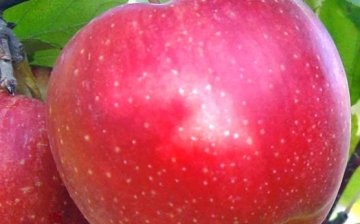
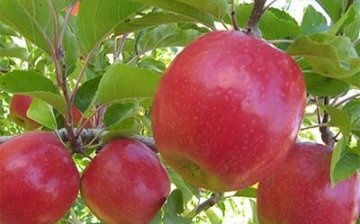
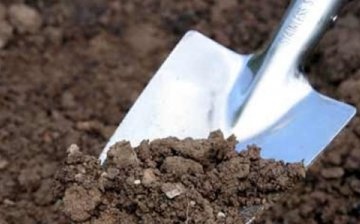
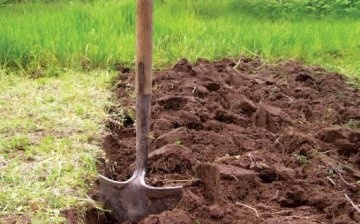
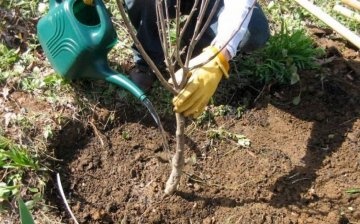
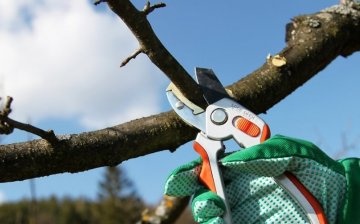
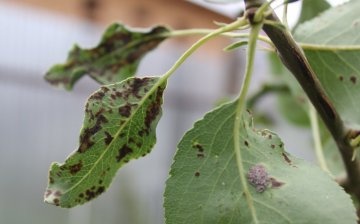







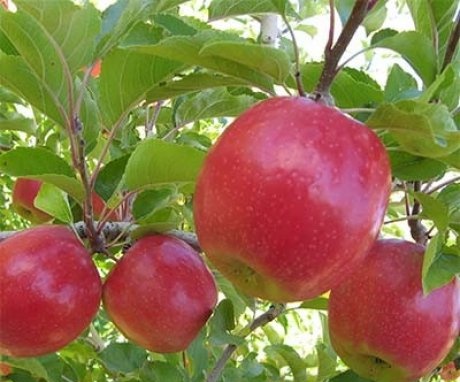
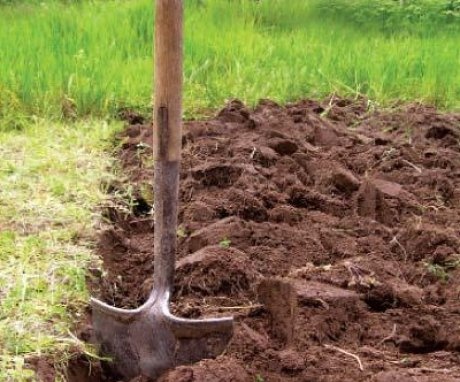

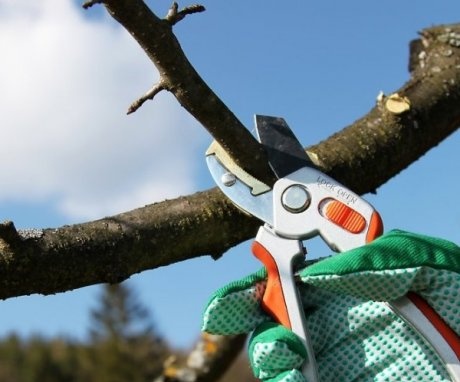

In my garden, not yet apple trees of this variety, but apples of winter varieties - Simerenko and Kalvil white winter, are stored in the basement until April and no longer. If Pink Lady apples can be kept for up to 10 months, then next year I will definitely plant a seedling of this variety.